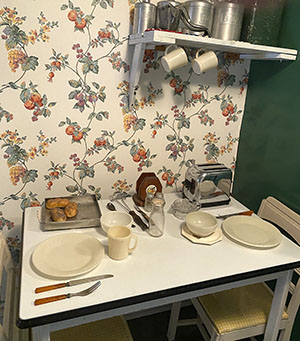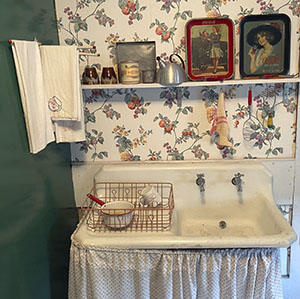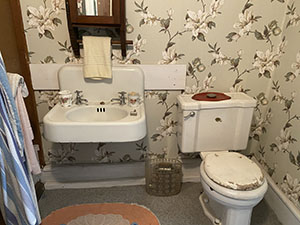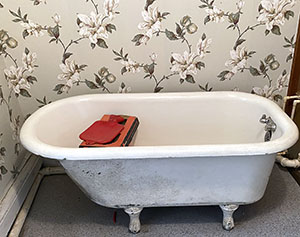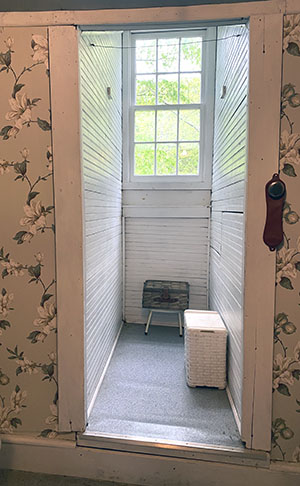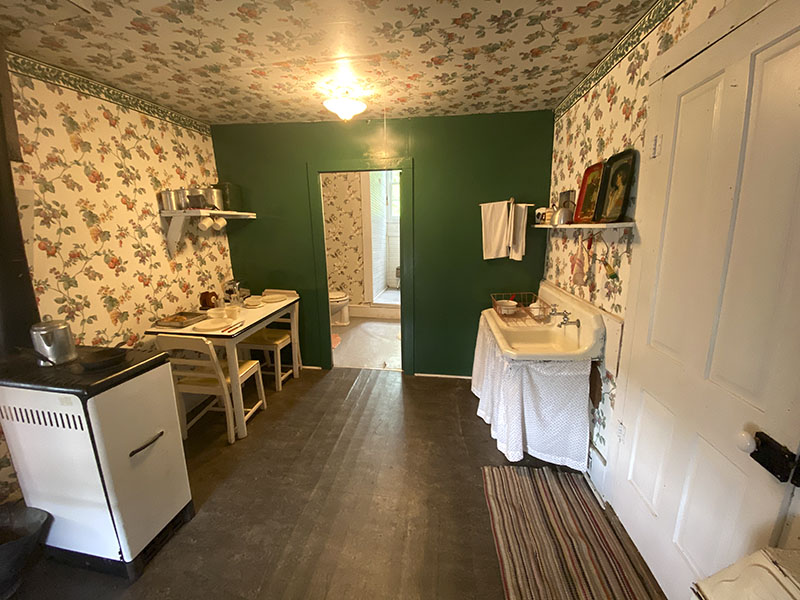
This view, although the dimensions are somewhat distorted by the wide-angle lens, shows the layout of the upstairs kitchen and bathroom. This area was not possible until the mid-1950s. To stay nominally competitive with the new motels springing up in the area, the owner finally installed minimal plumbing. The small stove at left burned either wood or coal. The door on the right has the old rimlock doorset. All of the doors in the museum have rimlocks with porcelain knobs. The floor is covered with battleship linoleum, layed directly on the pine board flooring which shows through the floor covering. No underlayment was installed, although during restoration some newspaper was found under part of the original linoleum. As in the kitchen downstairs, the ceiling is wallpapered like the walls.
